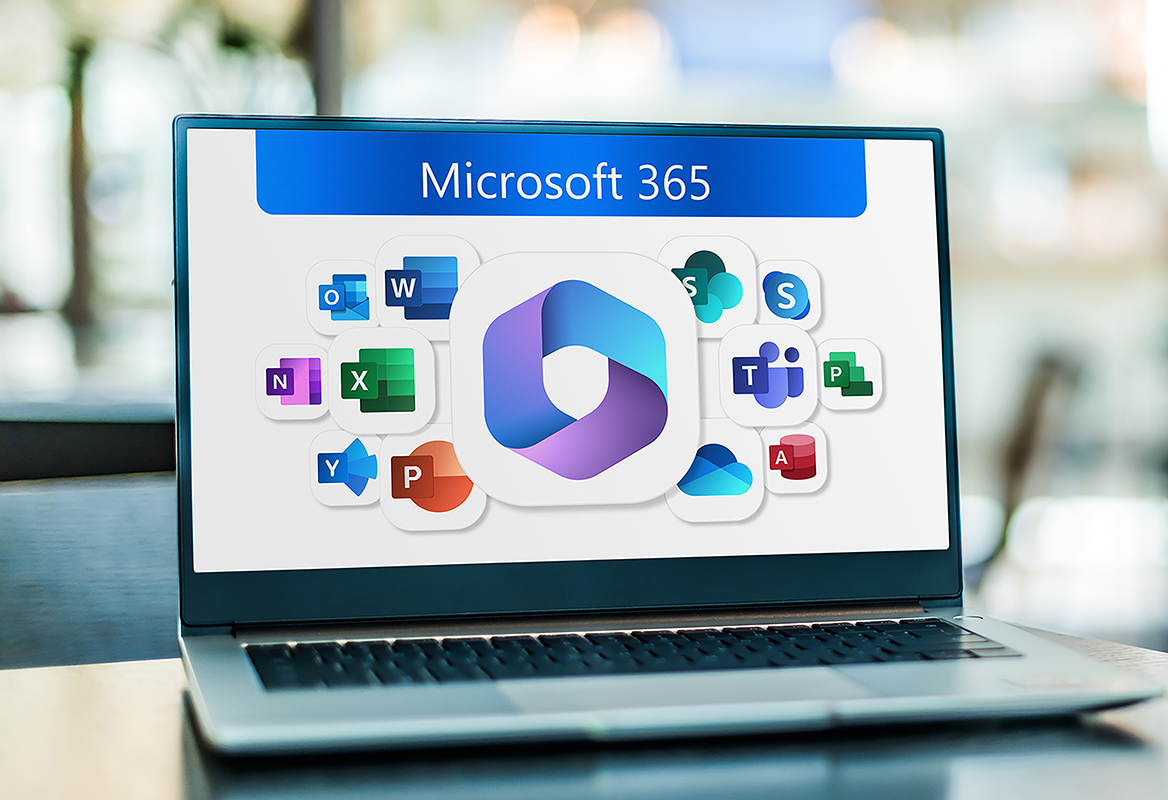With the year of the pandemic affecting us all, it has also hugely impacted how technology was consumed in 2020, and will most certainly continue to shape 2021 tech trends and the years to come.
Predicting the future is inevitability difficult, something that has been further compounded from the unexpected experiences in 2020, but what can we expect to see for tech trends this year?
Looking at the road ahead, here is what Krome have predicted for the tech trends for 2021:
Continued growth in remote working
With the rapid rise in remote working as a result of the pandemic last year, now continuing into to 2021, organisations have had to adapt to operating as a remote team, for many, whilst this has been a new way of working, it has also shown to have had a high success rate.
With the unexpected length of time that the UK has seen restrictions, for many organisations remote working is now the norm, it is very likely that many businesses will be considering taking a remote working model onboard permanently.
In a survey performed by Whereby, surveying 1,500 UK Business professionals, 82% of UK businesses are considering sticking to their current remote working arrangements which were first implemented at the start of the pandemic, with 65% of businesses stating that they are contemplating downsizing or changing their office space after lockdown is lifted, expecting more of their staff to continue to be remote working in the future.
What does this mean for technology?
1. Adoption of collaboration Tools
An obvious one for prediction for tech trends to be seen in 2021 will be the continued increase in the need for collaboration tools as more businesses join the remote working system permanently. Collaboration tools such as Microsoft Office 365, Zoom, Slack, Trello and others will become essential for supporting and empowering the remote workforce long-term. This increased requirement for collaboration tools should mean that businesses see improvements in both efficiency and staff productivity, but these improvements will only be achieved by deploying the right toolsets, specifically those that offer true collaboration between apps.
Collaboration tools are essential for remote working as it allows communication, management and security within your team. Microsoft O365 offers their users collaboration tools such as Microsoft Teams and Skype. They provide users with all the apps they need from one vendor rather than multiple resources, which makes it easier to manage and more secure.
2. Everything-as-a-Service (XaaS)
With the surge of remote working having accelerated the adoption of cloud services, we expect to see a major push for Everything-as-a-Service (XaaS) in 2021. We are already experiencing a surge in services such as Software-as-Service, Infrastructure-as-Service, Security-as-a-Service, Backup-as-a-Service, the list goes on and continues to grow. Utilising an as-a-service based model reduces the investment needed for physical hardware and reduces the costs associated with maintaining it. With so many IT systems and platforms already becoming consumption-based service models, we expect that this will largely increase this year. Organisations will significantly reduce their physical hardware footprint, and regardless of whether it is on-premise, cloud or a hybrid environment, IT as a whole will be based around a “pay-as-you-go” subscription model.
Whilst the cost savings are achieved by reducing the costs associated of owning the platforms, a subscription-based model often sees standard features reducing at renewal points, with previously free features becoming premium add-ons, although utilising an as-a-service consumption models enables organisations the flexibility to scale up or down and helps to support investment forecasts.
3. Consolidation of Systems and Applications
With organisations that are still using multiple platforms, systems and applications, a strong focus following the new ways of working initiative brought on by the pandemic will be to simplify IT systems by consolidating as much as possible, retiring legacy systems, archiving data and unifying applications from many to one for ease of use and management. For example, we have seen many large enterprise organisations using legacy systems that depend on outdated and unsupported operating systems, leaving these organisations reliant on obsolete and unsecure platforms. In order to modernise and secure the data or applications on these systems, modernisation, consolidation and transformation will be focus for both security, compliance and cost saving.
4. Artificial Intelligence (AI) & Machine Learning
Another tech trend already transforming industry sectors, like healthcare, retail, finance and media, AI is becoming the “new normal” for everyone. We know of the developments in AI for self-driving vehicles, smart cities, digital-assistants and robotic factory workers, this shows that it is certain to rapidly advance into other new territories. In 2021, we predict that AI & Machine Learning will further advance, becoming a more valuable tool with everyday living, assisting us in problem-solving automatically with no human interaction required, for example, in the healthcare sector whilst COVID is still in full sway. Gartner stated:
“By the end of 2024, 75% of enterprises will shift from piloting to operationalising AI, driving a 5X increase in streaming data and analytics infrastructures. Within the current pandemic context, AI techniques such as machine learning (ML), optimisation and natural language processing (NLP) are providing vital insights and predictions about the spread of the virus and the effectiveness and impact of countermeasures. AI and machine learning are critical realigning supply and the supply chain to new demand patterns.”
5 . Rise of Cyber-attacks to continue
In 2021, we expect to see cyber-criminals continuing to change their approach, to find new and advanced strategies to attack those remote working on their devices, with cyber threats increasing in both numbers and complexity. With employees transferring from their office space to their home working environment, potential network security issues may arise without being noticed due to the change in locations. Cyber-criminals will be searching for security gap and exploiting the vulnerabilities within the setup. It’s essential for organisations to take significant measures in order to improve their network security to prevent this from happening, such as implementing Zero trust and SASE security solutions as below.
6. Zero-trust networking extending to home workers through the application of SASE
A Zero-Trust security strategy is one that eliminates the concept of trust from a network forcing the requirement for content inspection before granting access to a company’s network and data resources.
Now, more than ever with data, applications and the workforce are geographically separated from each other. With data in datacentres, cloud-based providers and consumed via multiple SaaS providers, businesses are struggling to maintain visibility of their resources, compounded by the difficulty in managing who has access to these resources and how? Some have approached this challenge by utilising multiple point products, such as firewalls, remote-access VPNs and secure web gateways. However, with many applications now in the cloud, traffic does not have to traverse a VPN, which creates a contradiction as proxies and secure web gateways cannot tunnel traffic to private applications. As a result, businesses have been seeking alternatives to remote access VPN’s that are able to manage both cloud and data centre applications.
This has led to the development of software-defined perimeter point products that are able to complement proxies. This addresses the private application access use case but increases the number of deployed point products. Some also bypass the enforcement of security policies because they circumvent the inspection normally applied to internet-bound traffic, something that must be addressed, and we see SASE and zero-trust network access as the answer to this conundrum.
SASE combines networking and network security services, such as ZTNA, cloud access security broker (CASB), data loss protection (DLP), Firewall-as-a-service (FWaaS), and more, into a singular comprehensive, solution that supports all traffic, applications and users. This model also allows companies to rapidly authenticate users, identify and mitigate potential security threats, and fully inspect content. SASE means businesses do not have to stand up separate infrastructure to address both internet and private applications, as was once the case with conventional proxy- and software-defined perimeter products. By combining SASE and Zero Trust principles, companies are achieving ZTNA with a single solution to consistently apply and enforce security policies across their entire network.
7. Emergence and Improvements of SOAR
We expect to see other tech trends develop with the increase in the emergence in Security, Orchestration, Automation and Response (SOAR) in 2021. Many of the characteristics that describe SOAR are unique, this is because SOAR is gathering traction in the cybersecurity industry. SOAR helps SecOps and CSIRT teams in many ways, from improving the efficiency of the security operations by automating workflow processes, to automating low-risk tasks without the need for human intervention.
It is crucial to place an emphasis on automation. SOCs have a lot to deal with from a threat perspective and the problem is that attacks are continuing to become more sophisticated, as hackers and fraudsters use advanced technologies to attack. Which is where SOAR comes into play. Investigating and managing just a single cyber-attack can require a huge amount of work, just in managing all the different tools sets that are utilised to perform different functions, with SOAR, we are able to orchestrate multiple manual process automatedly from a unified entity and visualise it via a single pane of glass. As cyber threats increase in number and sophistication, the requirement for SOAR and its ability utilise machine learning and automation to augment SecOps workload, will only increase.
8. Augmented Reality (AR)
AR will continue to benefit those suppliers of physical experiences amid the in-person experience limitations of COVID-19. The pandemic has upended business as usual across all verticals. As working remotely and social distancing took hold, the requirement was accelerated for technology to be able to support everything from onsite repairs to training employees.
AR allows employees to be more efficient by utilising real-time learning and guidance remotely through virtual collaboration, while also keeping them safe by limiting unnecessary travel. Business with staff that must work with instructions to maintain and service equipment, replace faulty parts or power on new systems need to quickly understand the steps required and better visualise the processes they need to take to enable them to complete tasks faster.
Advancements in AR will enable us to overlay virtual tutorials onto equipment to provide technicians with quick, visual demonstrations that will enable them to produce results or administer fixes faster, therefore reducing time on site and improving the overall operational efficiency they can offer clients. It will also enhance remote learning by providing enhanced visual overlays, improving the overall training experience, leading to a better quality of service and reducing the time required to upskill staff.
9. Windows 10 2021 H1
Less of a prediction, more of a “will they, won’t they” as Microsoft announced the release of W10 2021 H1, code name “Iron update”. Not as exciting in name as its predecessors Vibranium or Manganese, but with a host of promised features that look to heavily improve and enhance the W10 experience, that is “if” Microsoft release them or are just teasing us. So, what is potentially landing with the Iron update:
- DNS Configuration in the Settings App
- Secure DNS over HTTPS (DoH), System-Wide
- Start-up notifications – When a Windows application sets itself to automatically start with your PC, Windows will now show you a “Startup App Notification” that informs you of this.
- A Redesigned Emoji Picker (how will we live without this one if it doesn’t make release) …
- “Windows Voice Typing” Replaces Windows Dictation, with a greater feature set and more voice commands
- Microsoft’s New Icon Theme
- Storage Health Monitoring which will proactively notify if internal storage is becoming too full
- Disk Management in Settings
- Linux GPU Compute and More WSL Improvements
- Linux Files in File Explorer
- Dark Mode (and History) for Windows Search
- A File Skill for Cortana
- Improved Graphics Settings for Multiple GPUs
- Architecture in the Task Manager
- Improved Sound Device Settings
- Windows Will Tell You What’s New in Updates
We will have to wait until Spring this year to see how much makes it to the release update.
10. Advancement in 5G
Having seen the way that the workforce was truly mobilised in 2020, we believe that the rollout of 5G en masse will only increase and enhance our abilities to work from anywhere or on (almost) any device.
We believe that we will see the near-term benefits in mobile with the deployment of 5G networks this year — which will accelerate globally. The considerable increase of speed and reduced latencies will enable people to multitask with their phone or mobile device as the hub. This will allow people to use high bandwidth applications on the go as if they were on the corporate LAN. Depending on how 5G is priced, could it replace the need for corporate Wi-Fi? 5G certainly looks to outperform it on speed, so if the costs become comparable, will 5G kill the AP?
If you would like to learn more about Krome’s predictions for tech trends for 2021 please contact a member of the team today on 01932 232345 or complete the form below.
Want to know more?
Contact us today to explore how our tailored solutions can align with your business priorities.
Join our Krome community



